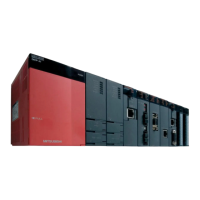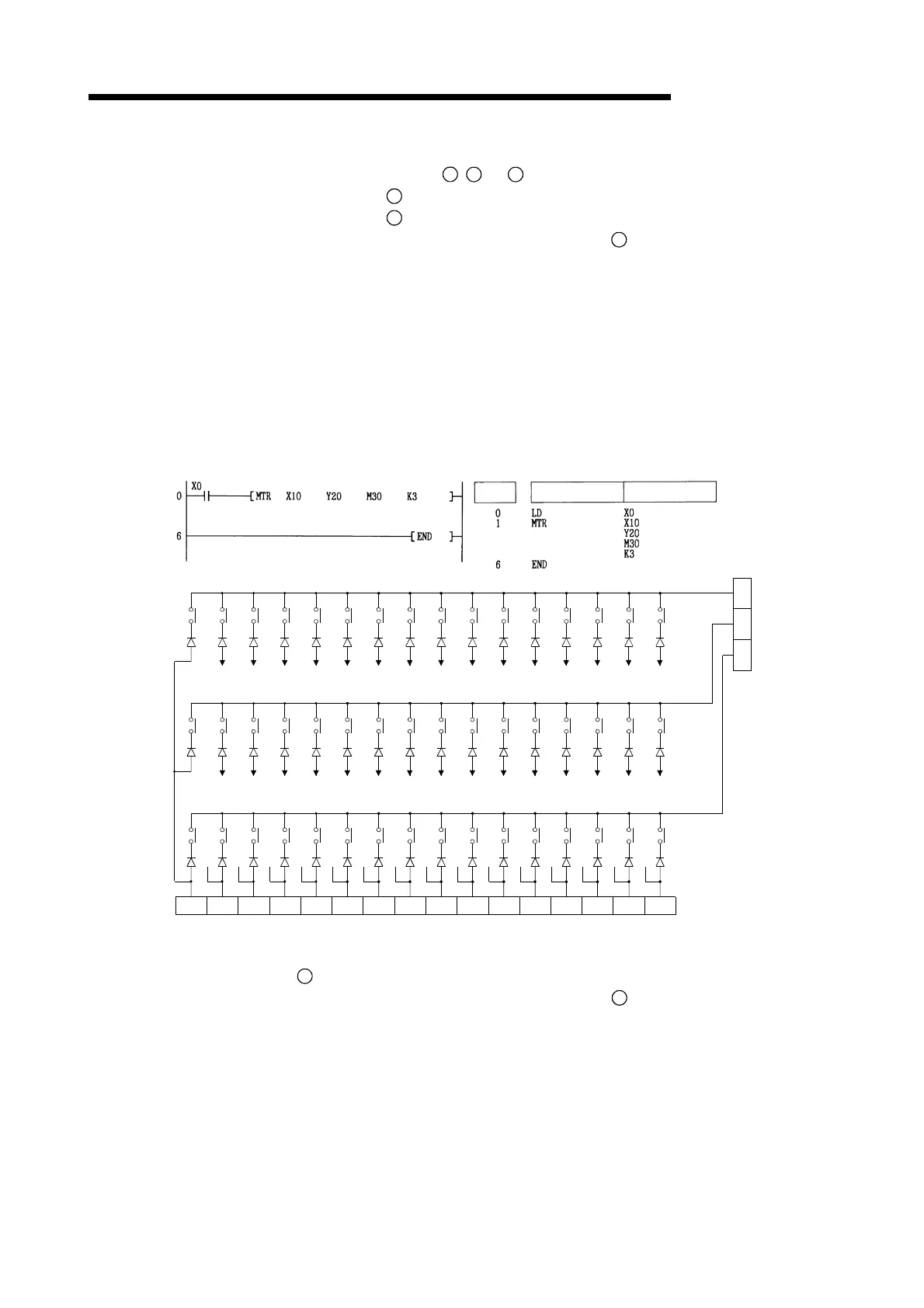6 - 133 6 - 133
MELSEC-Q/QnA
6 BASIC INSTRUCTIONS
(8) No processing is performed in the following cases.
• The device number designated by
S
,
D1
, or
D2
is not divisible by 16.
• The device designated by
S
is outside the actual input range.
• The device designated by
D1
is outside the actual output range.
• The space 16 x n-points following the device designated by
D2
exceeds the relevant device
range.
• The value for n2 is not between 2 and 8.
[Operation Errors]
(1) There are no errors associated with the MTR instruction.
[Program Example]
(1) The following program fetches 16 points x 3 rows starting from X10 when X0 is ON, and stores
it from M30 onward.
[Ladder Mode] [List Mode]
Steps
Instruction
Device
M62
X012
M63
X011
M64
M65
X013
M66
X014
M67
X015
M68
X016
M69
X017
M70
X018
M71
X019
M72
X01A
M73
X01B
M74
X01C
M75
X01D
M76
X01E
M77
X01F
M46
X012
M47
X011
M48
M49
X013
M50
X014
M51
X015
M52
X016
M53
X017
M54
X018
M55
X019
M56
X01A
M57
X01B
M58
X01C
M59
X01D
M60
X01E
M61
X01F
M30
X012
M31
X011
M32
M33
X013
M34
X014
M35
X015
M36
X016
M37
X017
M38
X018
M39
X019
M40
X01A
M41
X01B
M42
X01C
M43
X01D
M44
X01E
M45
X01FX010
Third row
Second row
First row
Y22
Y21Y20
[Caution]
(1) Note that the MTR instruction directly operates on actual input and cutput.
The output
D1
that had been turned ON by the MTR instruction does not turn OFF when the
MTR command turns OFF. Turn OFF the specified output
D1
in the sequence program.
(2) An MTR instruction execution interval must be longer than the total of response time of
input and output modules.
If the set interval is shorter than the value indicated above, an input cannot be read
correctly.
If the scan time in a sequence program is short, select the constant scan and set the scan
time longer than the total of response time.
Artisan Technology Group - Quality Instrumentation ... Guaranteed | (888) 88-SOURCE | www.artisantg.com

